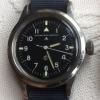-
Similar Content
-
Recently Browsing
- No registered users viewing this page.
-
Topics
-
Posts
-
I’ve watched every video I can find on YouTube. Some of the info in contradictory and none mention the effect on amplitude or spring coil spacing which I observed. I was hoping someone here is a Seiko expert and knows these inside out.
-
This video explains how to set up and adjust the etachron regulator : I hope that helps, Mark
-
This eBay listing seems to verify that the watch disassembles as I suggested : here. The display caseback is held by the section that pushes out of the outermost rear bezel. The movement seems to be a Ronda 1113. Best Regards, Mark
-
Decided to update with the repaired watch back in rotation and the new anniversary gift.
-
I’ve been playing with a NH35 movement that which has the classic Etachron regulation system and a few balance assemblies as practice. What I’m trying to do is get comfortable with the effect both the stud and regulator pin positions have on rate and positional error. When I install a new balance assembly I install it with the assembly in place on the cock and cock is attached to base plate. I use the back of the tweezers to push the stud into place and feel the click. However, I noticed that the angle of the stud can be adjusted and what I also noticed is that some movements have the stud carrier arm bent down a little and that changes the angle of the hairspring leaving the stud. This angle effects how the spring goes through the regulator pins and also the spacing of the coils opposite the stud. What I thought I was supposed to do is set the regulator block in the middle of the curve, open the pins, and use the stud angle to center the spring. Then the stud is set. Now on all the new NH movements I have seen the angle of the regulator block is about 60 degrees counter clockwise from full open. I watched a video where the author used the regulator pin adjust to adjust rate and position error. When I close down the pins I do notice that the rate increases but also the amplitude drops, the coil spacing changes and hairspring appears slight straighter between the stud and the regulator block. If I open the pins the amplitude comes back, the spring breathes a bit more between the stud and the regulator block and the rate slows. So, a long post I know but I would really appreciate any advice on how to correctly adjust the etachron system for rate, amplitude and positional error.
-





Recommended Posts
Join the conversation
You can post now and register later. If you have an account, sign in now to post with your account.
Note: Your post will require moderator approval before it will be visible.